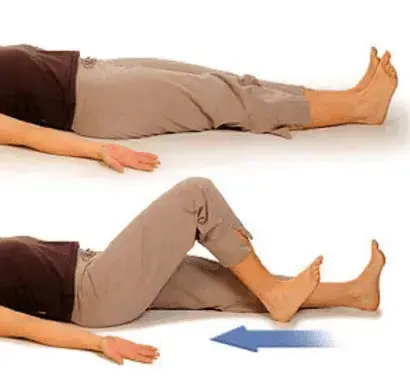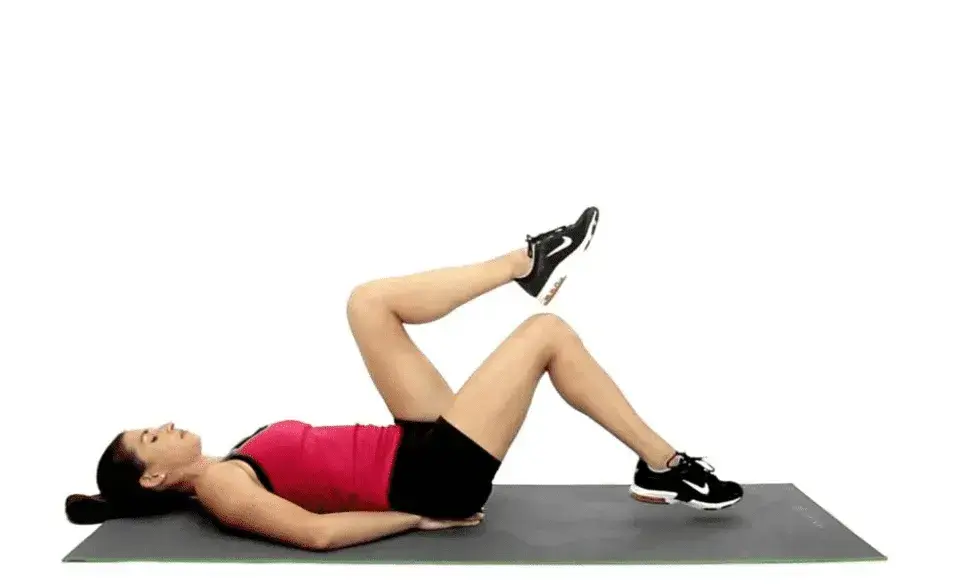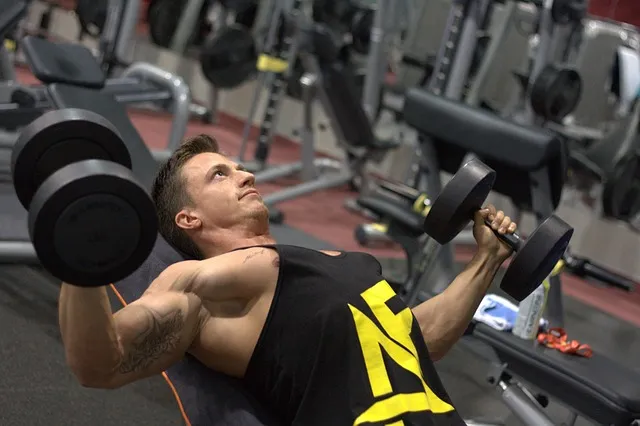Pregnancy is an incredible journey during which a woman's body undergoes profound changes to accommodate the growth and development of a baby. After pregnancy, one common post-pregnancy concern is diastasis recti, characterized by the separation of the rectus abdominal muscles, often called the "six-pack" muscles. Fortunately, diastasis recti can typically be addressed with targeted exercises that can be done at home. However, Exercising with diastasis recti requires carefully selecting safe and effective workouts. Scroll down to learn diastasis recti exercises that help make your tummy muscles strong. Also, understand exercises that you should avoid.
Also Read: Back Pain During Pregnancy
What is Diastasis Recti?
The separation of the rectus abdominal muscles, known as diastasis recti, can result in a noticeable gap in the midsection of the human body, particularly the core. The muscles in your tummy are stuck together with something called the "linea alba." It's like a web of tissue that allows your belly to stretch when someone is having a baby. The growing baby and uterus cause this natural process to push or pressure against the abdominal wall.
After giving birth, the uterus naturally shrinks back to its pre-pregnancy size. However, in some cases, the stretching of the linea alba can be too much for the body to handle safely. As a result, the connective tissue in the abdominal muscles fails to return to its original state, like an over-stretched rubber band losing its elasticity.
Also Read: Exercises during Pregnancy to Strengthen the Back
What are the factors leading to diastasis recti?
Several factors can contribute to the development of diastasis recti, including:
1. Poor Posture: Incorrect posture can put pressure on the abdominal muscles.
2. Improper Breathing: Inadequate breathing patterns can impact core stability and contribute to diastasis recti.
3. Mismanagement of Core Pressure: Incorrect handling of intra-abdominal pressure during activities can lead to this condition.
4. Improper Movement Mechanics: Certain movements or exercises may weaken the abdominal muscles.
5. Genetics: Different genetic conditions may also be responsible for developing diastasis recti.
Also Read: 9 Effects of Poor Posture on Health You Should Not Ignore
Best Diastasis Recti Exercises for Strong Muscles
Following recti diastasis exercises can help you maintain proper core engagement. Aim to dedicate at least five to ten minutes daily to these exercises to support your recovery. As you progress, focus on incorporating correct core breathing into your daily activities and workouts.
1. Diaphragmatic Breathing

Diaphragmatic breathing is a primary and effective exercise that helps with diastasis recti. A lot of people tend to breathe mainly using their chest, which can cause problems like aches in the neck, shoulders, and back. Breathing the right way is very important for your core muscles. Your diaphragm, a special muscle under your lungs, is like the crucial part of your body. When you practice diaphragmatic breathing, it helps you breathe better and can make you feel better if you have diastasis recti.
How to perform
-
Lie down in a comfortable and relaxed position.
-
Gently place one hand on your chest and the other on your abdomen, just below your ribcage.
-
Breathe in slowly through your nose. As you breathe in, focus on expanding your abdomen like a balloon.
-
Breathe out slowly through your mouth.
-
Pay attention to your breath and feel your diaphragm moving up and down. Try to keep your chest relatively still during this exercise.
-
You can do this several times a day.
Also Read: #LadiesAndBabies: Pregnancy Do's & Dont's
2. Pelvic Floor Activations

To get better from diastasis recti, you must ensure your inside core muscles work together. The top part is called the diaphragm, and the bottom is the pelvic floor. They team up to make your core strong. When you breathe in, your diaphragm tightens to let air into your lungs, and your pelvic floor relaxes. When you breathe out, your diaphragm relaxes to push air out of your lungs, and your pelvic floor tightens slightly. You need the diaphragm and pelvic floor to work during exercises to help your core get better.
How to perform
-
You can do pelvic floor activations while sitting or lying down.
-
Tend to hold your pee as it gently stretches the pelvic floor muscles.
-
Take a deep breath and then exhale. As you exhale, gently squeeze and lift the pelvic floor muscles. It should feel like a gentle tightening, not a big effort.
-
Hold the squeeze for a few seconds (begin with 3-5 seconds), and then relax the muscles completely.
-
You can Perform this squeezing-holding-relaxing pattern for about 10-15 times.
Also Read: Pelvic Floor Exercises: During & After Pregnancy
3. Supine Marches

Supine marches help strengthen your core while ensuring your abdominal muscles remain engaged and do not push upward during leg lifts. Focus on maintaining deep core activation and keep your abdominal muscles hugging toward the midline of your body instead of pushing outward.
How to perform
-
To practice supine marches, Lie on your back (supine) on a flat surface, like an exercise mat or the floor.
-
Bend your knees so your feet are flat, and keep your arms relaxed at your sides.
-
Slowly lift one foot a few inches off the ground while keeping your knee bent. Your other foot should remain on the floor.
-
Lower the lifted leg back to the ground and raise the other leg.
-
Continue to alternate your legs in a march, as if you are marching in place while lying down.
-
Keep your movements slow and controlled. It's more about engaging your core and controlled leg lifts than speed.
-
Remember to breathe steadily throughout the exercise. Inhale and exhale as you march your legs.
Also Read: #LadiesAndBabies: Best Pregnancy Exercises For Expecting Mothers
4. Heel Slides

Heel slides are effective diastasis recti exercises that release tension in the back and hip flexors while engaging the pelvic floor and core. The goal is to initiate the movement from your core rather than your spine, pelvis bones, or hip flexors.
How to perform
-
Lie on a flat surface, such as an exercise mat or the floor.
-
Bend your knees so your feet are flat.
-
Begin by extending one leg and sliding your heel along the ground. Keep the opposite knee bent.
-
Slowly slide your heel back toward your body, bending your leg and returning your heel to its starting position.
-
Perform this sliding motion smoothly and gently.
-
Complete a set of repetitions for one leg and then switch to the other.
5. Leg Lifts

Leg lifts are designed to prevent hip flexors and lower back muscle overuse, which can exacerbate diastasis recti. These exercises encourage the correct use of your core muscles to lift the leg, promoting core stability.
How to perform
-
Lie down comfortably on your back on a flat surface.
-
Keep your legs together and your arms resting at your sides.
-
While keeping your legs straight, slowly lift them off the ground. Start by lifting them a few inches.
-
Hold your legs raised for a moment (start with a few seconds and gradually increase).
-
Lower your legs back to the starting position with controlled movements.
Also Read: 30th Week of Pregnancy: Be Careful About The Back Pain
6. Toe Taps

Toe taps are advanced diastasis recti exercises that increase the load on your core muscles as you lift your legs to a 90-degree position. Focus on maintaining core engagement without pushing outward on the abdomen during this exercise.
How to perform
-
Start the practice by standing up straight with your feet hip-width apart.
-
Lift one foot off the ground and balance on the other foot.
-
Tap the toes of your lifted foot in front of you.
-
Put your foot back down next to the other foot.
-
Please switch to the other foot and tap its toes before you.
-
Keep switching and tapping your toes like you're playing a game.
7. Quadruped Paper Slides and Reaches

Diagonal exercises like quadruped paper slides reach the target of the cross-body muscle fibers of the internal and external obliques. These movements encourage your entire core to work together, enhancing the coordination of your core muscles and accelerating diastasis recti recovery.
How to perform
-
Get down on your hands and knees in a tabletop position. Your hands should be under your shoulders, and your knees should be under your hips.
-
Lift one arm and the opposite leg up high, like you're sliding a paper under them.
-
Put them back down. Now, switch to the other hand and leg in the same manner. Repeat the exercise to make the muscle strong.
These exercises help you gradually regain core strength and coordination while promoting diastasis recti recovery. It is essential to progress at your own pace and prioritize proper form and core engagement. Everyone's journey to recovery is unique, so it is wise to work with a qualified professional specializing in diastasis recti, such as a corrective exercise specialist, women's health physical therapist, pelvic floor physical therapist, or occupational therapist. These experts can guide you through a tailored recovery plan and ensure you perform exercises safely and effectively.
Also Read: Massage in pregnancy: is it safe or not?
Is exercising with diastasis recti safe?
Exercising with diastasis recti can be safe, but it's essential to do the right exercises and consult with a healthcare professional or physical therapist. As we all know, the body needs time to recover after pregnancy. In that case, Certain exercises, like those that put too much strain on the abdominal muscles, can worsen diastasis recti.
So, it's essential to follow a specialized exercise plan designed to help strengthen the core while protecting and healing the separated abdominal muscles. You should always consult your doctor to ensure you're doing safe and effective exercises with diastasis recti for your specific situation.
Exercises to Avoid with Diastasis Recti
According to Better Health, there are some exercises you should avoid. When dealing with diastasis recti, it is crucial to be cautious of exercises that can exacerbate or hinder your progress. While recommendations may vary depending on individual circumstances, it is advised to avoid the following exercises, especially during the initial stages of recovery:
1. Planks: Planks place intense pressure on the core and may lead to abdominal doming, which can worsen diastasis recti.
2. Traditional Sit-Ups: Traditional sit-ups can strain the abdominal muscles and contribute to diastasis recti if not performed correctly.
3. Push-Ups: Push-ups engage the core and may cause excessive strain, leading to abdominal separation.
4. Backbends: Backbends can create tension in the abdominal area and should be avoided until core strength is fully restored.
However, as you progress in your recovery journey and your core becomes more robust and more stable, you can reintroduce these exercises safely into your workout routine. Always listen to your body, consult a qualified professional, and prioritize exercises supporting your recovery.
Also Read: Antenatal Care During Pregnancy
Conclusion
In conclusion, diastasis rectus is a common post-pregnancy condition that can be effectively managed through targeted exercises and proper guidance. By understanding the condition, performing the recommended exercises with care, and seeking the assistance of qualified professionals when necessary, you can take significant steps toward healing and restoring your core strength. Remember that recovery is a unique journey. Be patient with yourself and stay committed to your exercises for the best results.
Frequently Asked Questions
Are there exercises to avoid with Diastasis Recti?
High-impact exercises like sit-ups and crunches should be avoided, as they can worsen the condition.
How can I check if I have Diastasis Recti?
Lie on your back and self-check by feeling a gap between the abdominal muscles near the belly button.
How long does it take to recover from Diastasis Recti through exercise?
Recovery times vary, but consistent exercise and proper technique can lead to improvement in a few months.
What are the best exercises rectus diastasis?
1. Abdominal Bracing 2. Bird Dog 3. Glute Bridge 4. Chair Position 5. Alternating Leg Circles
What are some safe exercises for Diastasis Recti recovery?
Exercises for diastasis recti, like pelvic tilts, heel slides, and controlled core movements are generally safe and effective.
What are the exercises for abdominal diastasis?
The exercise for abdominal diastasis are: 1. abdominal compressions 2. pelvic tilts, toe taps 3. heel slides 4. single-leg stretches 5. bridges with belly scooping
Can I still exercise with diastasis recti?
Some core exercises help to reduce the symptoms, however, you should know about some harmful ones as well. Avoid it for direct exertion.

Reviewed by







